We'll hear how a scanning technique can home in on the biochemical signature of prostate cancer in this Naked Scientists NewsFlash, along with how bats and dolphins share genes for echolocation and why barefoot runners have a smoother ride. Plus, the discovery of a chemical signal that slows nerve degeneration.
In this episode
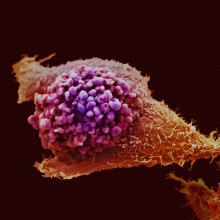
00:11 - Scanning for Cancer’s Biochemical Signature
Scanning for Cancer’s Biochemical Signature
Researchers in the states may have found a way to detect potential prostate tumours using Magnetic resonance spectroscopy, and this should lead to fewer false negatives, better precision when locating tumours and a better idea of how aggressive they are.
Magnetic resonance spectroscopy analyses the biochemistry, unlike things like MRI, which look at the structure of tissues. This means it can be used to look for the distinct chemical, rather than structural, signatures of a tumour.
Leo Cheng and colleagues at Massachusetts General Hospital published a study in the journal Science Translational Medicine that builds on some earlier work published in 2005. This earlier work looked at the biochemistry of a tumour and identified a metabolic spectrum for prostate cancers - a series of chemicals produced by the tissue that identifies it as a tumour. Studying the entire suite of metabolites left behind by a cell is known as metabolomics.
With this ensemble of metabolites in mind, they set about scanning 5 cancerous prostate glands that had been removed from patients. Their scans measured the proportion of these signature metabolites to give an indication of whereabouts in the prostate had a higher 'Malignancy index' - i.e. a higher likelihood of being cancerous tissue.The prostates were then passed on to histopathologists who, while being very careful to preserve information about whereabouts in the prostate any particular sample was taken from, used standard histological methods to analyse the tissue visually, and determine where the tumours were located.
When the results were compared, 5 out of seven tumours coincided with areas of high malignancy index - the remaining two it is thought were compromised by being close to the edge of the prostate, where interactions with air could have altered the metabolomic profile. Overall, its accuracy was over 90%.
Interestingly, there was also a correlation between the size of the tumour and the magnitude of the malignancy index - suggesting that this technique could not only identify malignant tissue, but also give you an indication of how aggressive it is.This is only a prospective study, and the low sample numbers may lead to an overestimate of how accurate it really is, but these are very promising early results.
As they say in the discussion of the paper: "Metabolomic imaging has the potential to detect lesions, guide biopsy, and eventually identify other conditions of malignancy, such as tumour aggressiveness". They also add that it could be adapted to identify other types of cancer.
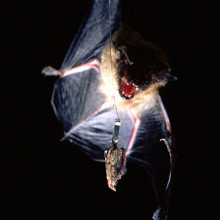
The echoing links between bats and dolphins
Bats and dolphins may appear to be very different types of mammals - after all one of them flies and the other swims - but it turns out they have both, independently evolved exactly the same gene that allows them to use sound as a way of visualising the world around them.
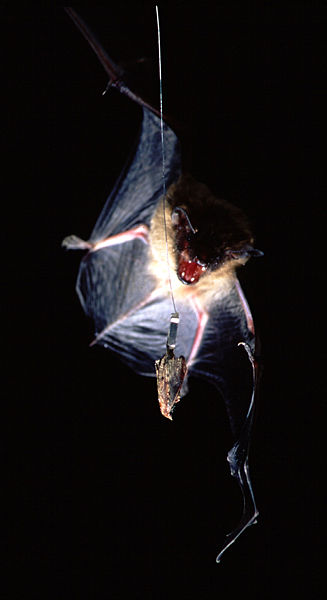 Both bats and dolphins hunt using echolocation. They emit bursts of high-pitched noise and listen carefully as the sound waves bounce back to them. They use these echoes to build a detailed mental picture of their environment and - hopefully - to pinpoint other animals that will become their dinner.
Both bats and dolphins hunt using echolocation. They emit bursts of high-pitched noise and listen carefully as the sound waves bounce back to them. They use these echoes to build a detailed mental picture of their environment and - hopefully - to pinpoint other animals that will become their dinner.
A vital part of both the bat and dolphin echolocation systems is a series of tiny, stiff hairs in their ears that vibrate and detect very high-frequency sounds and are made from a protein called prestin.
An international team of researchers have published two papers in the journal Current Biology, uncovering the remarkable fact that the prestin gene has undergone precisely the same changes in DNA sequence in distantly related bats and dolphins.
Many other groups of species have evolved to look remarkably similar despite not being closely related, such as modern-day dolphins and ancient, extinct reptiles called ichthyosaurs. But this is the first time that so-called "convergent evolution" has been detected at the molecular level. The research team were able to build a genetic family tree showing how the changes in the prestin gene built up identically over time in both bats and dolphins.
It suggests that there may only be one way that mammals can physically evolve the necessary apparatus to echolocate. It is remarkable that many species of bat and cetaceans - including whales and dolphins that can echolocate - have taken the same evolutionary pathway towards an identical genetic solution to the challenge of seeing with sound.
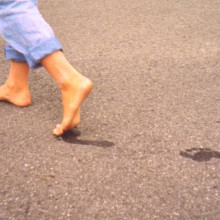
The Benefits of Running Barefoot
People who run barefoot learn to minimise impact shock, adopting a different style of running from those in shoes, according to research published in Nature this week. This could help us to understand the impact-related injuries suffered by a high percentage of runners.
Daniel Lieberman and colleagues at Harvard University used kinematic and kinetic analyses to observe runners who were either habitually barefoot or who generally wore shoes. Both groups were asked to run in shoes and barefoot, and high-speed camera footage was taken to observe exactly how their feet moved. They also got volunteers to run over a force plate, to analyse how forces were transmitted during different kinds of running.
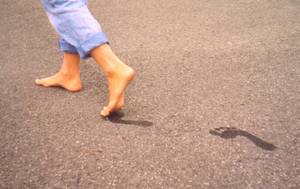 There are three ways your feet can land when you're running - a rear-foot strike (RFS), landing on the heel first; a mid-foot strike (MFS), when the heel and ball of the foot land simultaneously; and a forefoot strike (FFS), in which the ball of the foot lands before the heel comes down. Sprinters and the habitually barefoot seem to use mainly Forefoot or mid0foot strike, while shod endurance runners (and the majority of joggers) use rear-foot strike.
There are three ways your feet can land when you're running - a rear-foot strike (RFS), landing on the heel first; a mid-foot strike (MFS), when the heel and ball of the foot land simultaneously; and a forefoot strike (FFS), in which the ball of the foot lands before the heel comes down. Sprinters and the habitually barefoot seem to use mainly Forefoot or mid0foot strike, while shod endurance runners (and the majority of joggers) use rear-foot strike.
To understand why we use these different ways of landing, and what it means for injury risk, Lieberman looked at the force profile for each step type. By plotting the forces felt against time on a graph, it was easy to see that rear-foot strike, either in shoes or barefoot, has a large spike of applied force just at the time of landing, while FFS running gives you a very smooth wave, with little or no sudden impact forces - essentially a much smoother ride. This step also helps to lower the body's centre of mass relative to the vertical force, and as such reduces the mean force acting on the feet.
Landing on the forefoot first, therefore, helps to reduce the amount of the body's mass that needs to come to a full stop per step, and considering that most runners will strike the ground around 60 times per kilometre, this is significant for the likelihood of developing repetitive stress injuries.
Humans and their ancestors have probably been running ever since we adapted to bipedal locomotion, and only in running shoes for the last 40 years or so. Evidence from the structure of the modern human foot suggests that it's adapted to get the best out of forefoot-strike running, reducing the likelihood of stress injury, and offering a selective advantage. As the incidence of running injuries remains significant despite advances in footwear technology, it seems that even the best shoes may not be as good for you as no shoes at all!

The Fish with wonky mouths
Among the enormous diversity of cichlid fish living in Lake Tanganyika in eastern Africa, one group in particular has evolved a most unusual feeding habit: they sneak up behind other fish and pick their scales off, approaching every time either from the left or right side. You can easily see whether a fish is a lefty or righty by the shape of its mouth, which is hugely lopsided, bending around to one side or the other, like a pair of tweezers with the ends bent over.
 Now researchers Thomas Stewart and Craig Albertson from Syracuse University in the US, have discovered that these fish are genetically programmed to be left or right -jawed. The reason both lefty and righty fish are found in a population, rather than one dominating, is because there will always be an advantage for the minority form. If there are more righty cichlids around, the prey fish learn to expect an attack from the right, and so lefty fish can easily sneak in and get a bite to eat.
Now researchers Thomas Stewart and Craig Albertson from Syracuse University in the US, have discovered that these fish are genetically programmed to be left or right -jawed. The reason both lefty and righty fish are found in a population, rather than one dominating, is because there will always be an advantage for the minority form. If there are more righty cichlids around, the prey fish learn to expect an attack from the right, and so lefty fish can easily sneak in and get a bite to eat.
But, it turns out that the situation is more complicated that was originally thought, because some scale eaters start out life with a straight mouth, pointing neither left nor right. More studies are now needed to work out what happens to these young straight-mouths that don't seem to make it to adulthood. It could be that they aren't good enough at hunting and so don't survive. Or as they grow up, their mouths could bend around to the left or right.
It just goes to show that from flat fish with eyes that migrate from one side of their head to the other, and human beings who have hearts usually on the left side, not everything in life is neat and symmetrical.

12:05 - The Chemical that Keeps Nerves Alive
The Chemical that Keeps Nerves Alive
Dr. Michael Coleman, the Babraham Institute.
Ben - Also in the news this week, scientists at Cambridge's Babraham Institute have identified a factor that helps to stop nerves from degenerating. This could lead to better treatments for degenerative diseases, but also better ways to halt the degeneration of a nerve when it gets damaged as a result of an injury or stroke. Dr. Michael Coleman leads the group responsible for the discovery and he joins us now. Hi, Mike.
Michael - Hello.
Ben - So first of all, what does a nerve cell look like?
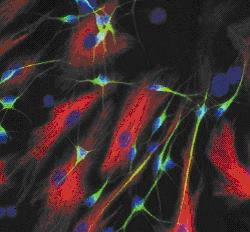 Michael - Let's start with the cell body - which is essentially the equivalent of what happens in most other cells. In this cell body, you have the nucleus which contains all the genetic material, compared to other cell types the nucleus might be slightly bigger. There's a little bit more metabolic activity and protein synthesis going on in that cell body, but by and large, the cell body is not so different from other cell types. Then we have, coming into that cell body, what we call the dendrites. Now there could be a very huge number of these - literally thousands or tens of thousands of dendrites coming into that cell body, and the job of the cell body really is to integrate the signal that comes from this enormous number of dendrites, and to place what we call an all-or-nothing response. That all-or-nothing response, the electrical activity transmitted to the next cell, then goes down to what we call an axon, and that's the bit we're interested in. There are two things really that are special about the axon. First of all, there's only one of them and this means that this is effectively the most vulnerable part of the neuron because if you lose that axon, you have totally lost the functional capability of that neuron. The second thing that's interesting about the axon is its length. This can be enormously varied between different types of neuron, but in its extreme case in humans, this can be anything up to a meter long. It can go the length of your arm or leg and it can go the length of your spinal cord.
Michael - Let's start with the cell body - which is essentially the equivalent of what happens in most other cells. In this cell body, you have the nucleus which contains all the genetic material, compared to other cell types the nucleus might be slightly bigger. There's a little bit more metabolic activity and protein synthesis going on in that cell body, but by and large, the cell body is not so different from other cell types. Then we have, coming into that cell body, what we call the dendrites. Now there could be a very huge number of these - literally thousands or tens of thousands of dendrites coming into that cell body, and the job of the cell body really is to integrate the signal that comes from this enormous number of dendrites, and to place what we call an all-or-nothing response. That all-or-nothing response, the electrical activity transmitted to the next cell, then goes down to what we call an axon, and that's the bit we're interested in. There are two things really that are special about the axon. First of all, there's only one of them and this means that this is effectively the most vulnerable part of the neuron because if you lose that axon, you have totally lost the functional capability of that neuron. The second thing that's interesting about the axon is its length. This can be enormously varied between different types of neuron, but in its extreme case in humans, this can be anything up to a meter long. It can go the length of your arm or leg and it can go the length of your spinal cord.
Ben - They certainly do sound like the fragile part, the weak link in the chain. What happens when a nerve becomes damaged?
Michael - We've already pointed out that the axon is very long and clearly, the axon has to be supplied with all sorts of material from that cell body. Most of the proteins, certainly all of the RNA and many of the organelles are made within the cell body, and they have to be shipped out. There's a very intricate system of what we call motor proteins, ATP using proteins, that are responsible for taking out and controlling the delivery of those proteins and organelles to the further parts of the axon. Clearly, like any pipeline or supply system, that's going to be vulnerable in various ways. So in various disorders, which may be inherited or neurotoxic or viral disorders for example, and protein aggregation disorders, you can have a blockage in this axon which prevents materials from getting to the far end. Sooner or later, that can result in functional impairment and ultimately, the death of that axon.
Ben - You've been able to identify a particular factor that seems to be a "stay alive" signal for the axon itself. How did you find it? Why did you know that there was something like this there?
Michael - That's right. So, what we did was effectively ask the question - among these thousands of different cargoes that are being transported down the axon, is there something which is actually a limiting factor for its survival? A nice analogy here might be a car accident on the motorway, causing a huge build up of traffic behind it. Among that traffic, among those vehicles caught upon the motorway, you will have an enormously different number of reasons why those people are trying to get from A to B. Some will be relatively trivial and not a major problem and some might be a life or death issue, in the most extreme cases. For example, the family trying to get to the beach for a day out will be very frustrated to be held up for half an hour, but it might not be a major problem. But if the ambulance is trying to get to the accident at the front is held up then you quickly have a life or death issue on your hands. What we have effectively done is to go in there and say, "What is the first protein that becomes life threatening to that axon if it cannot get through to the far end?"
Ben - And how did you identify it?
Michael - I should say that the experiments didn't happen in this order, but when we stand back now and take a sort of broader look at it, we can interpret it in this way. Effectively what we did was to cut the axon - clearly, that results in a catastrophic death of the distant parts of the axon. That's something called Wallerian degeneration which we spend most of our time studying. And then we ask - what, within there, is the first factor that's not being able to get through that kills that axon. To do that, what we have done (not always knowing at the time) is to replace that factor by something that can substitute for its action. We knew that there was something which will keep those axons alive because experiments back in the University of Oxford in the late 1980s indicated that there was a mutant strain of mouse which acquired a spontaneous and harmless mutation, and this, in experiments where those nerves were being cut, actually delayed the degeneration of those nerves by tenfold. Over the subsequent 10 years or so, we and others identified the gene that's underlying this process. In the last 10 years, this has led to us trying to understand why that, or how that protein works.
Ben - So, by identifying the gene in these mutant mice, you were able to work out which protein or at least which family of proteins it was that was responsible? Proteins always have strange names that are very hard to remember. What's this one called?
Michael - Yes. It's called Nmnat2, nicotinamide mononucleotide adenylyltransferase 2.
Ben - So, difficult to say, as well as difficult to remember.
Michael - Yes.
Ben - What does it actually do? We know that it seems to keep the nerve alive, but by doing what?
Michael - That's an interesting question. It certainly has an enzyme activity. It makes a molecule called NAD which the biochemists among you will know is heavily involved in energy metabolism inside the cell. That is, in a way, the most obvious potential consequence of this protein being missing when it can't get into the axon with enough quantity. However, sometimes the most obvious direction to take is not the correct one. We've seen this a number of times and there is some discussion in the field at the moment about whether NAD synthesis is the most important or the key function of this protein that's involved in the axon degeneration or whether it's something else. Maybe it works in reverse or maybe it catalyses a different reaction as well.
Ben - Clearly there's still some work to do, but what's the next stage for you?
Michael - So what we try to do often as scientists is to keep away from animal experiments, where we possibly can, by taking cell culture alternatives or work in other organisms such as fruit flies. The work that we've done up to this point has been in a cell culture system. At some point there will be a need to confirm this looking at a mammalian nervous system to know that what we've seen is physiologically relevant. That's a very important step because if we always stick to alternatives, then there is also a risk of diverting the science if we don't actually confirm that we are looking at the right thing. So that's one very important step to take in the near future and another one is to look at what this means in terms of disease. So, we need to actually remove this protein now and ask whether the nerves actually start to die back and whether this mimics certain disease situations.
Ben - But certainly very promising work. I do like the fact that we seem to feature all these really promising things and hopefully, we can follow up with you in the future and find out how it's doing?
Michael - Yes. That would be good.
Ben - Well thank you ever so much, Michael. That was Dr. Michael Coleman. He's based at the BBSRC's Babraham Institute. They've published this discovery in the open access journal, PLoS Biology.










Comments
Add a comment